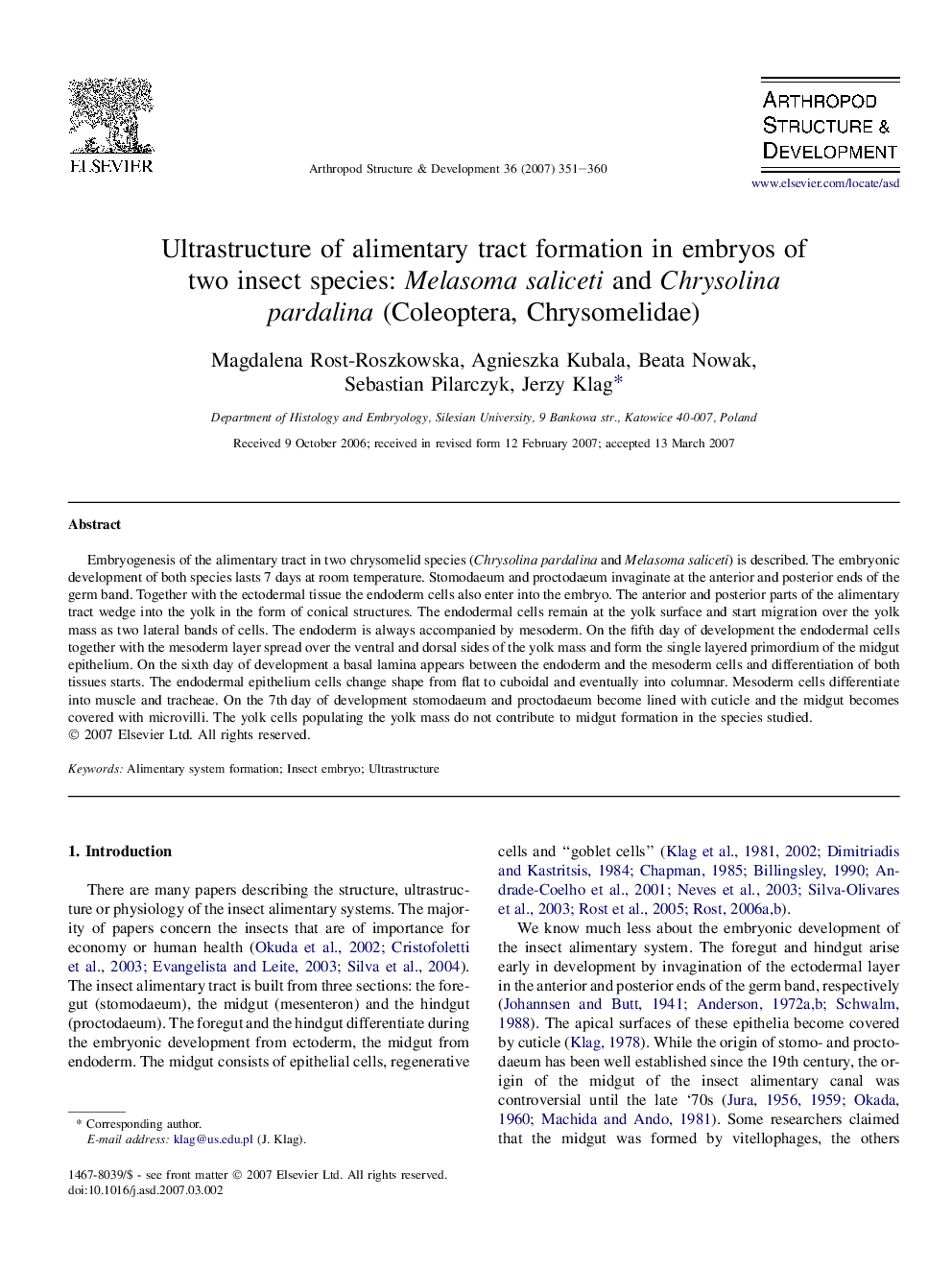| Article ID | Journal | Published Year | Pages | File Type |
|---|---|---|---|---|
| 2779086 | Arthropod Structure & Development | 2007 | 10 Pages |
Embryogenesis of the alimentary tract in two chrysomelid species (Chrysolina pardalina and Melasoma saliceti) is described. The embryonic development of both species lasts 7 days at room temperature. Stomodaeum and proctodaeum invaginate at the anterior and posterior ends of the germ band. Together with the ectodermal tissue the endoderm cells also enter into the embryo. The anterior and posterior parts of the alimentary tract wedge into the yolk in the form of conical structures. The endodermal cells remain at the yolk surface and start migration over the yolk mass as two lateral bands of cells. The endoderm is always accompanied by mesoderm. On the fifth day of development the endodermal cells together with the mesoderm layer spread over the ventral and dorsal sides of the yolk mass and form the single layered primordium of the midgut epithelium. On the sixth day of development a basal lamina appears between the endoderm and the mesoderm cells and differentiation of both tissues starts. The endodermal epithelium cells change shape from flat to cuboidal and eventually into columnar. Mesoderm cells differentiate into muscle and tracheae. On the 7th day of development stomodaeum and proctodaeum become lined with cuticle and the midgut becomes covered with microvilli. The yolk cells populating the yolk mass do not contribute to midgut formation in the species studied.
